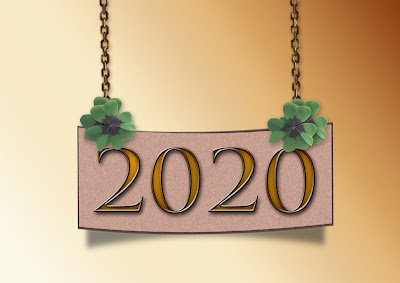History of Christmas
Let's start by reading a bit about the history of Christmas
The Christmas period
is marked with lights, festivities, carols and singing. It is celebrated on the
25th of December every year and traditionally it’s
the time spent at home with close family members. For more of the
party atmosphere. you’ll need to stay at home with your family or you can go
outside to see the fireworks. This ending of Christmas on the 6th Jan (Twelfth
Night) is also commonly celebrated with fireworks. One of the greatest places
to stay during Christmas day 2019 is Reykjavik as you’ll see most people, events, and
large celebrations. If you need to do shopping, then you will likewise see
large amount of shops here, and some shops and restaurants remain open also on
Christmas day.
But have you ever wondered
how did the Christmas celebrations start, history of christmas tree and what is
the history behind it? If you want to know further, then read on……...
Nobody can confirm Jesus Christ's actual birthday. There's no date in the Bible then why do we mark it on December 25th? There were certainly many disagreements between early Christians as to when it should be celebrated! Also, Jesus ' birth probably did not occur in year 1, but somewhat earlier, somewhere between 2 BCE / BC and 7 BCE / BC, possibly in 4 BCE / BC (there is no 0-years go by).
Nobody can confirm Jesus Christ's actual birthday. There's no date in the Bible then why do we mark it on December 25th? There were certainly many disagreements between early Christians as to when it should be celebrated! Also, Jesus ' birth probably did not occur in year 1, but somewhat earlier, somewhere between 2 BCE / BC and 7 BCE / BC, possibly in 4 BCE / BC (there is no 0-years go by).
During the time of
the Roman Emperor Constantine (he was the first Christian Roman Emperor) the
first documented date of Christmas being observed on December 25 was in 336.
But at this time it was not an official holiday of the Roman empire. However,
there are many different traditions and hypotheses as to why Christmas is being
observed on December 25.
A very early
Christian tradition said the day Jesus (called the Annunciation) was on March
25th when Mary was told she would have a very special baby, and it is still
celebrated today on March 25th. It's December 25th nine months after March
25th! March 25th was also the day some early Christians thought the world had
been made, and also the day that Jesus was thought to have died.
Many people also
think that December 25th might have been chosen because around this date the
Winter Solstice and the ancient Roman pagan midwinter festivals called '
Saturnalia ' and ' Dies Natalis Solis Invicti ' took place in December-so it
was a time when people were celebrating things already.
The Winter Solstice
is the day between the rising sun and the setting of the sun for the shortest
time. It's on the 21st and 22nd of December. For pagans it meant the winter was
over and spring was coming and they had a festival for celebrate it and worshipped
the sun to triumph over the winter gloom. The Winter Solstice is known as Yule
in Scandinavia and some other parts of northern Europe and is where we get Yule
Logs from. The mid-winter festival is renamed Koleda in Eastern Europe.
The Saturnalia
Roman Festival took place from 17th to 23rd December and celebrated the Roman
god Saturn. Dies Natalis Solis Invicti means' birthday of the unconquered moon'
which took place on the 25th of December (when the Romans believed the Winter
Solstice took place) and was the Pagan Moon god Mithra's' birthday.' The holy
day was Sunday in the pagan religion of Mithraism, and that's where that word
comes from!
In 274, the Roman emperor
Aurelian founded' Sol Invictus.' But there are accounts of early Christians
linking Nisan 14th to March 25th, so that December 25th returns to about 200!
The Jewish Lights Festival, Hanukkah ends on Kislev's 25th (the month in the Jewish calendar which takes place around the same time as December). Hanukkah celebrates that, after many years of not being allowed to practice their faith, the Jewish people were able to re-dedicate and worship in their Temple in Jerusalem.
The Jewish Lights Festival, Hanukkah ends on Kislev's 25th (the month in the Jewish calendar which takes place around the same time as December). Hanukkah celebrates that, after many years of not being allowed to practice their faith, the Jewish people were able to re-dedicate and worship in their Temple in Jerusalem.
Christian leaders succeeded
in converting many pagans to Christianity in the 4th century by allowing them
to continue the celebration of Saturnalia as well, and this was their first
link to the birth of Jesus. Because the Saturnalia festival had no connection
with Christian teachings, the rulers addressed the last day of the festival on
Jesus ' birth holiday. Contemporaries of the time persisted for many years to
allow the festival to continue in its lawless manner— with drinking, sexual
indulgences, singing naked through the streets. Nevertheless, most traditional
rituals have originated from the early days of Christmas, such as caroling (we
only wanted to wear clothes) and eating.
Although the pagan festivities died out as the pagans became Christians, because of their non-Christian heritage, Puritans did not observe the holiday. Nevertheless, other Christians continued celebrating Saturnalia and Christmas together, perfectly willing to have pagan celebrations converted into Christian holidays as more people became Christians. During 1466 under the direction of Pope Paul II, Saturnalia was intentionally revived to coincide with Christmas celebrations, and at the amusement of Rome, Jews were forced to run naked through the streets of the city.
Although the pagan festivities died out as the pagans became Christians, because of their non-Christian heritage, Puritans did not observe the holiday. Nevertheless, other Christians continued celebrating Saturnalia and Christmas together, perfectly willing to have pagan celebrations converted into Christian holidays as more people became Christians. During 1466 under the direction of Pope Paul II, Saturnalia was intentionally revived to coincide with Christmas celebrations, and at the amusement of Rome, Jews were forced to run naked through the streets of the city.
When the Saxons, the Germanic tribes of Europe, were converted to Christianity, they brought the word "yule," which means mid-winter, to be part of the Christmas traditions. Yule was described as the birthday of Jesus in the following years, but it was not used until the 11th century. Europeans have continued to celebrate the season for many centuries by burning a Yule log in the fireplace and lighting a Yule candle, rather than following any of today's many customs associates. In addition, many of Europe's and America's Christmas traditions were not established until the mid-19th century, and until many years later they were not considered to be particularly important.
The history of
Christmas tree tradition in the U.S. dates back to George Washington's period
and his 1776 conquest of the German Hessians. The Hessians were exuberant
because in the war against George Washington and his troops they felt they held
a winning hand. During the Christmas season, the fighting was a place of food,
music, and lighting of trees for the Germans. They paid little attention to
their military duties in their busy attempts to enjoy the season. Thus, for Mr.
Washington, the German Hessians became easy prey. His forces were able to sneak
in and defeat the enemy who had been unprepared for the battle. The Hessians were exuberant because in the fight with George Washington
and his forces they felt they had a winning hand.
During the Christmas
season, the fighting was a place of food, music, and lighting of trees for the
Germans. They have paid little attention to their military duties in their
hurried attempts to enjoy the season. Therefore, to Mr. Washington, the German
Hessians were easy prey. His forces were able to sneak in and defeat the enemy
who had been unprepared for the battle. Most Germans lived in the United States
after the war of 1776, bringing the Christmas tree, and spreading their
customs. The size of the tree was limited to 8 feet, and dolls were decorated. The U.S. recognized the need for a Christmas tree industry as the years
went by. The first supplier, Mark Carr's name from New York's Catskill
Mountains, took it upon himself to cut down abundant fir and spruce trees. He
then shipped them to New York City where he leased $1.00 room and sold for
$1.05 to $10.10 small trees and for $25 cents - 8 to 10 foot trees and he
continued his business till 1898.






Comments
Post a Comment